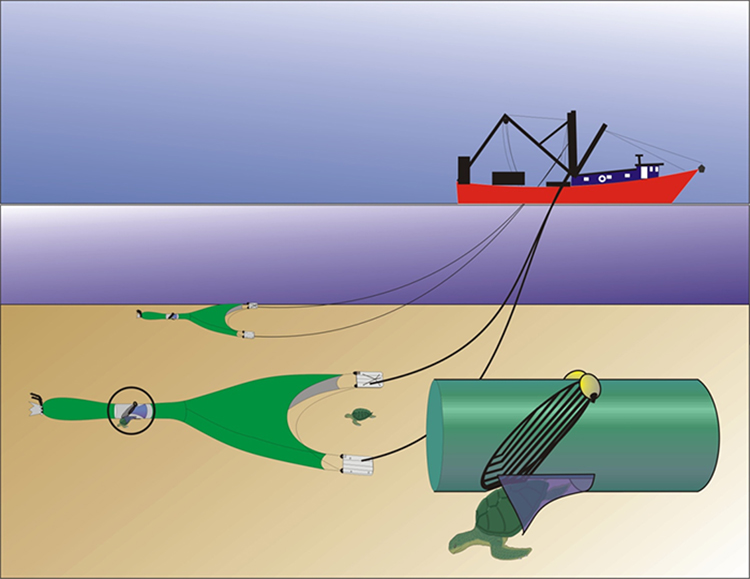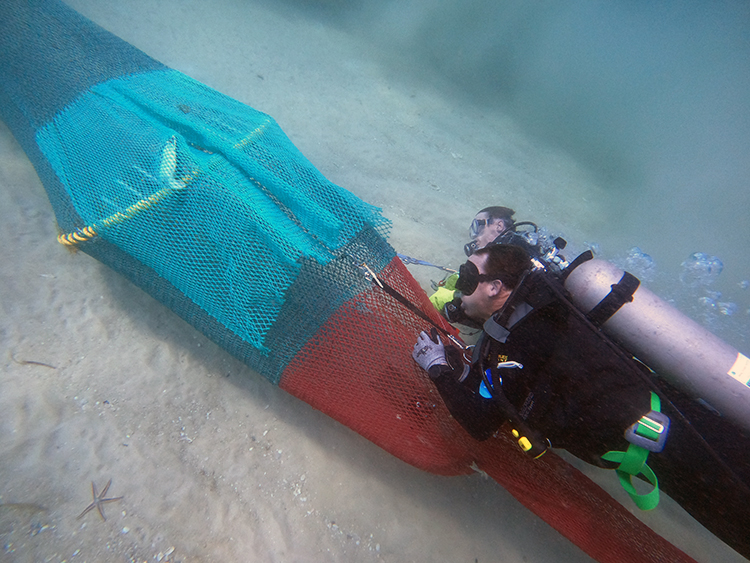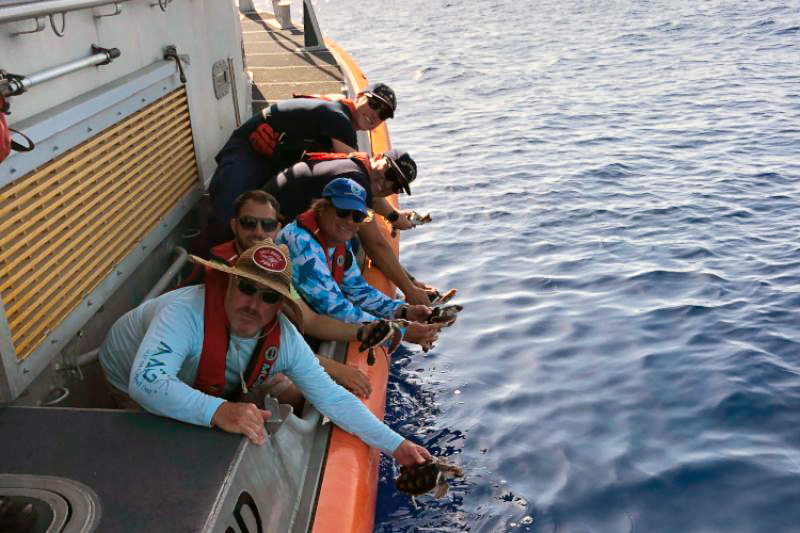A project to develop a new type of turtle excluder device (TED) in collaboration with the Gulf of Mexico shrimp fishery recently wrapped up its first round of prototype testing, and early results show promise to dramatically reduce the number of small turtles caught in shrimp trawl nets.
This NOAA-led bycatch reduction project was approved by the Open Ocean Trustee Implementation Group as part of its second restoration plan (PDF, 493 pages), and will help restore sea turtle species injured by the Deepwater Horizon oil spill.
A goal of this project is to work with shrimpers to identify new TED designs that are more effective in excluding small-bodied turtles than current TED designs. Working with the shrimpers, NOAA is identifying new TED designs to improve escape and survival of small turtles with minimal impact on shrimp harvest.

In its first round of testing, the NOAA project team tested a total of eight TED prototypes of various configurations, including an industry standard device with 4-inch bar spacing, and seven prototypes with 2.5-inch bar spacing.
Field testing of the prototypes, which took place earlier in 2022, yielded promising early results. Compared with the 4-inch configuration, which excludes only 26 percent of juvenile sea turtles, the 2.5-inch prototypes exhibited turtle exclusion rates ranging from 77 to 100 percent.

Photo credit: NOAA
To understand how various TED modifications influence the ability of small turtles to escape trawl nets, a team of NOAA SCUBA divers released individual juvenile turtles into a shrimp trawl net. The dive team timed, filmed, and recaptured each turtle as it passed through the trawl and into the TED, and also monitored each turtle’s activity and documented the escape rate.

In July, NOAA discussed the TED testing results with the project’s stakeholder workgroup. The three most promising narrow-bar TED prototypes will move on to catch retention testing to evaluate their ease of use and performance.
Learn more about the Reduced Bar Spacing Turtle Excluder Devices project on the Gulf Spill Restoration website, and other project data available through our DIVER portal. More information on other NOAA bycatch reduction efforts is summarized at the NOAA Fisheries website.
Want to know more about Gulf Spill restoration efforts? Subscribe today to have news and updates delivered right to your inbox.


